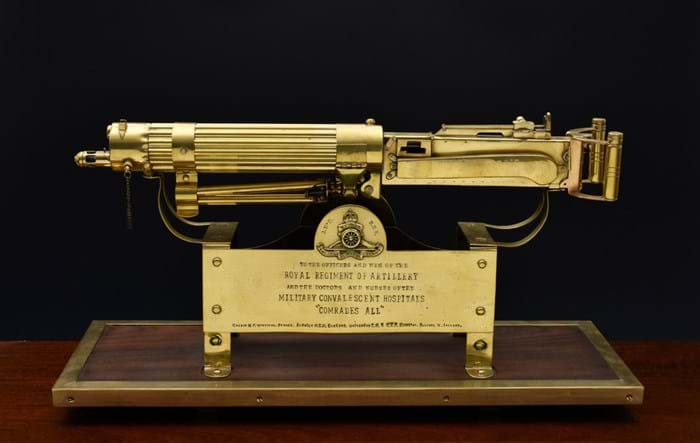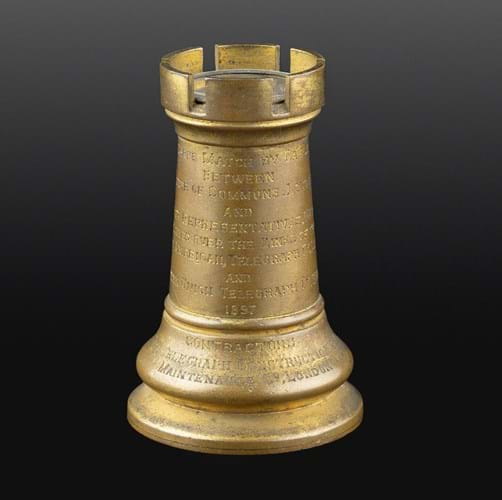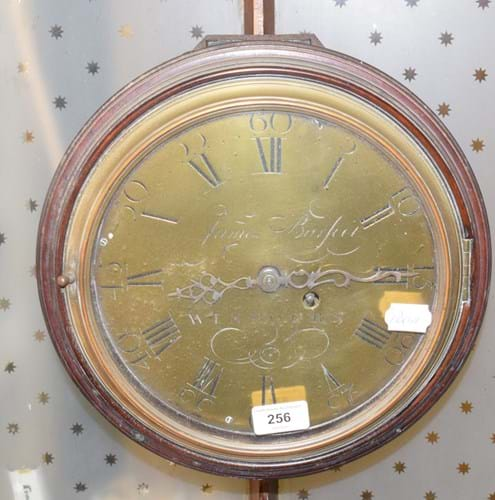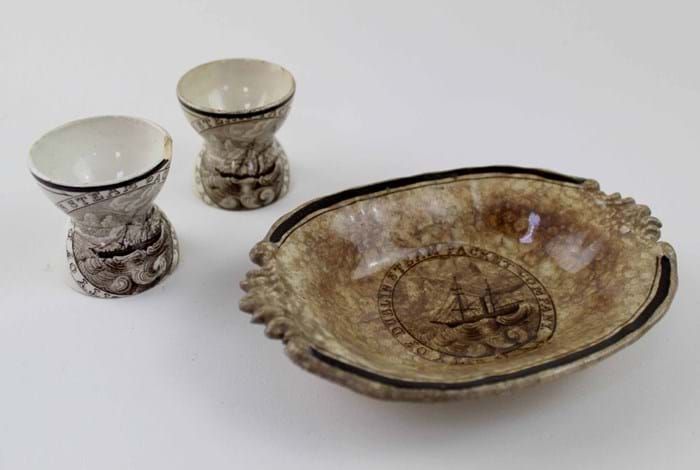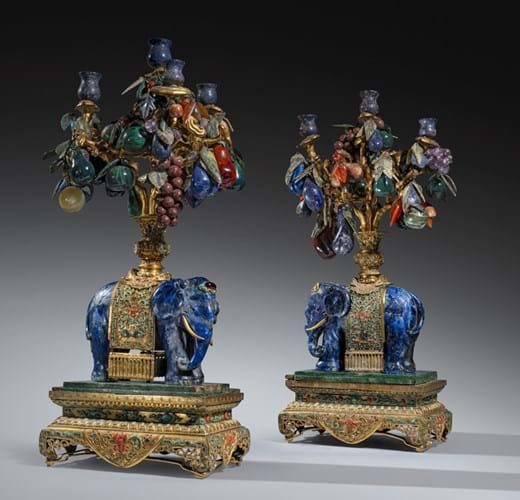
1. Qing elephants with Rothschild provenance – £68,000
This pair of Qing lapiz lazuli, polished hardstone and gilt bronze models of elephants (above) led the sale of Chinese Paintings and Works of Art at Woolley & Wallis in Salisbury on July 1 selling at £68,000.
Similar to another pair illustrated in The Complete Collection of Treasures of the Palace Museum, Treasures of Imperial Court, they stand around 23in (57cm) high on elaborate pedestals decorated in coral, turquoise and other jewels.
Not only is the elephant symbolic of peace and stability but the image of an elephant with a vase represents the rebus taiping youxiang which carries the sentiment of wishing for peaceful times. Live elephants carrying vases featured in processions celebrating the emperor's birthday.
These late 19th century models, which were estimated at £20,000-30,000 at the auction, have a Rothschild provenance. They are among a group of objects consigned for sale (across a number of different auctions) at Woolley & Wallis by the Trustees of Exbury House, Hampshire, home of Lionel de Rothschild (1882-1942), and Edmund de Rothschild (1916-2009).
2. Vickers machine gun model – £2600
First World War ‘trench art’ – objects made by soldiers, prisoners of war and interned civilians from munitions casings – does not get much better than this brass model of a Vickers machine gun.
Made in great detail and measuring a massive 22in (53cm), it carries a series of inscriptions including one reading To The Officers and Men of the Royal Regiment of Artillery and the Doctors and Nurses of the Military Convalescent Hospitals Comrades All. Below are the initials JMD and RPK (thought to be the makers of the piece) and the names of four Great War military hospitals in Calais, Alnwick, Whitehead and Belfast.
The model was acquired for a ‘world-renowned collection’ in 1957 and has since changed hands one at least one occasion. Offered for sale by Martel Maides in St Peter Port, Guernsey on June 30 it sold within estimate for £2600.
3. Commemorative chess piece – £3600
As implied by an extensive inscription, this souvenir chess piece was produced by Carlo Joseph and Arthur Alphonse Giuliano, sons of the celebrated Italian artist jeweller Carlo Giuliano, to commemorate a chess match played via telegraph in 1897.
To mark the completion of the Trans-Atlantic telegraph, a game began on May 31, 1897 between teams of five players each from the House of Commons in London and the House of Representatives in Washington. After moves were relayed back and forth for two days, the match was drawn with each side scoring 2.5 points.
Standing 3in (7.5cm) high, the gilt bronze ‘rook’ is set to the top with a section of the telegraph wire laid by the Anglo-American Telegraph Co of London and the Western Union Telegraph Co of New York. It is signed C&AG to the base.
A number of these souvenirs were produced at the time and they occasionally appear for sale. This one, offered at Mallams’ sale of Jewellery, Watches & Silver in Oxford on July 2 sold at £3600.
4. Georgian dial clock – £4800
Estimated at £150-200, this Georgian dial clock stormed to £4800 at Charterhouse Auctions in Sherborne on July 3. Two collectors made much of the bidding.
Eighteenth century single fusee dial clocks in ‘salt box’ cases are enjoying a purple patch in the market – and provincial examples such as this from the 1780s are scarce.
Offered in original condition it is inscribed to the 9in (23cm) dial with the name of Dorset maker James Barfoot, Winbourn (Wimborne). Little is known of Barfoot other than he worked in the market town of Wimborne from 1760-93.
He signed up to the local militia in 1796 when he was described as being 5ft 6in tall and having four children.
5. Victorian liner china – £1200
Liner china – ceramics associated with shipping lines and the golden age of maritime travel – can occasionally throw up a surprising result. Pieces from the early Victorian period are particularly desirable.
The sale at Adam Partridge in Liverpool on July 1-2 included three Staffordshire brown transfer-printed wares made for the City of Dublin Steam Packet Company. The firm, established in 1823, served the cross-channel routes between Britain and Ireland for over a century. For 70 of those years it transported the Anglo-Irish mail – assuming responsibility from the Admiralty in 1850.
These three pieces, a 6in (16cm) dish and two egg cups c.1850, include the company’s logo centred by a vignette of a steam clipper at sea. They are marked to the base for AB Buxton of Liverpool – a firm that the London Gazette of 1833 lists as an earthenware dealer trading from Cleveland Square, close to the Albert Dock.
Despite the poor condition (one egg cup has a large rim chip and the dish is badly stained) they improved on an estimate of £20-40 to sell at £1200 to a bidder on thesaleroom.com.


